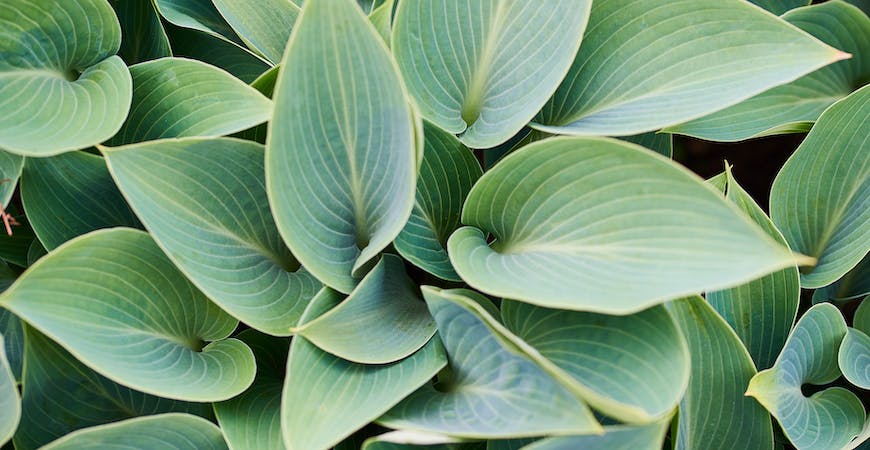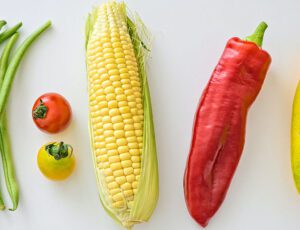
Hosta Companion Plants: A Beginner’s Guide
Hosta plants have grown in popularity over the past few years. But as every movie star’s memoir will tell you, being popular doesn’t save you from loneliness.
So, if you’ve found your once thriving hosta now lilting, consider a companion plant. Picking the right companion plants for your hostas can help everyone grow to their fullest.
Why Are Hosta Plants Becoming So Popular?
While those with green thumbs may develop some satisfaction from growing the most finicky of plants, most of us want something vibrant and easy to care for. Enter the hosta plant,
These perennials are extremely adaptable and durable. When planted outside, they can thrive even in less-than-ideal conditions.
Additionally, they require little maintenance. They can survive in full shade, and their need for water will generally depend on the quality of the soil.
It’s also easy to spread the hosta love around your neighborhood. Plants can be divided and shared with friends and neighbors so they can start their own collection.
Hostas aren’t dainty, either. Through their numerous varieties, they can range in height from eight inches to eight feet.
Because they’re attractive to pollinators, they can help native flowers and plants grow. That means hostas can give your entire garden a boost.
Hosta flowers are often spiky and grow in bell-shaped clusters. They can range in color from pale whites to luscious lavenders.
Across all varieties, most hostas have broad, waxy leaves of various shares of green. These leaves contain deep veins that add a distinct visual texture to the plant.
So, if you haven’t jumped on board the hosta bandwagon, there’s still plenty of space. And if you’ve got a friend whose hostas look especially vibrant, consider asking them for a cutting to share.
What Are the Benefits of Companion Plants for Hostas?
We’ve discussed companion plants before. Many of the general benefits that come with companion planting also apply to hosta companion plants:
- Plants with different root systems can help lessen soil compaction.
- Plants of different heights can help maximize space in a garden.
- Plants may help repel pests that other plants may attract.
It’s that last factor that’s perhaps most important when considering companion plants for your hostas.
Deer, rabbits, and voles are all known to regularly nibble on hostas. In fact, if you live in deer territory, it’s not altogether uncommon to wake up and find your hostas devoured.
Beyond mammalian concerns, slugs, snails, and grasshoppers can also seek out your hosta plants at snack time. They can eat through leaves, damage roots, and turn a typically durable plant into a catered meal.
So, when choosing a hosta companion plant, pick ones that serve as natural repellents to these fiendish pests.
While there are practical benefits when pairing companion plants with hostas, there are also aesthetic advantages to consider.
For instance, if you keep your hosta plant in your front yard, you’ll want to find a companion plant that matches, if not enhances its vibrancy. Considering its striking green leaves, you may want front yard hosta companion plants to complement its color.
What Front Yard Hosta Companion Plants Should You Consider?
Let’s start with that last point. If you host your hostas in your front yard, you’ll want a plant whose flowers create a radiant tableau.
Fortunately, there are quite a few that fit this description.
Coral bells typically have the same maintenance requirements as hostas. That is, they’re easy to care for and need only minimal sun exposure.
They also are the perfect visual companion to your hostas. Coral bell flowers vary in color from the softest of pastels to deeper pinks, purples, and reds.
Their petals are almost translucent. This gives the flowers a distinct visual luminosity.
For a more traditional visual companion, try tulips. Tulips come in almost every color of the rainbow, and their assortment of colors matches well with the hostas’ various shades of green leaves and pale flowers.
Tulips and hostas also benefit each other due to their life cycles. During the spring season, tulips will grow tall and serve as necessary hosta shade. When the tulips go dormant in the fall, the hostas’ leaves will then return the favor.
Furthermore, they are also considered a low-maintenance flower. For beginning gardeners, that makes tulips the ideal companion plant for front yard hostas.
What Hosta Companion Plants Will Keep Pests Away?
While you won’t lose any of the aesthetic appeal with these hosta companion plants, they also protect your plants from their most devastating foe: deer.
Begonia flowers tend to fall on the warmer side of the color spectrum. They’re waxy or silky texture serves as the palette for bold pinks, reds, and oranges.
Most varieties tend to be compact, bushy, or trailing. They can add lushness whether weaved in gardens or serving as their borders.
Even better, begonias are resistant to both deer and rabbits. That can help protect hosta plants, especially if you’ve been struggling to fend off these pesky pests.
Another option to keep deer and rabbits away is Japanese Hakone grass. An ornamental grass, it’s one of the few that can thrive in hosta-provided shade.
Additionally, its grass blades live up to their name due to their inherent sharpness. That deters deer, rabbits, and other mammals from taking a bit from your hosta.
To combat a slug invasion, try surrounding your hostas with herbaceous plants. The chemical content of most herbs tends to repel snails and slugs, forcing them to search elsewhere for grub.
So, if you’re looking for hosta companion plants that deter pests, consider begonias, Japanese Hakone grass, and herbaceous plants.
What Plants Should You Never Pair with Hostas?
While hosta plants are known for durability and adaptability, there are still some potential companion plants that you should try to avoid. Namely, you’ll want to avoid planting hostas under trees whose roots may compete for the same nutrients and moisture.
Some trees also shed bark. These tumbling sheddings can damage the hostas lying beneath them.
So, as you’re choosing a spot in your yard for your hostas, avoid spots near the following trees:
- Beech
- Birch
- Cherry
- Gum
- Maple
- Poplar
- Shagbark hickory
- Willow
Choosing the Right Companion Plants for Your Hostas
Whether you’re looking for striking aesthetics or to deter pests, there are a wide range of beneficial companion plants for your hostas. So, follow our guide so you can keep your favorite perennial thriving and happy!













